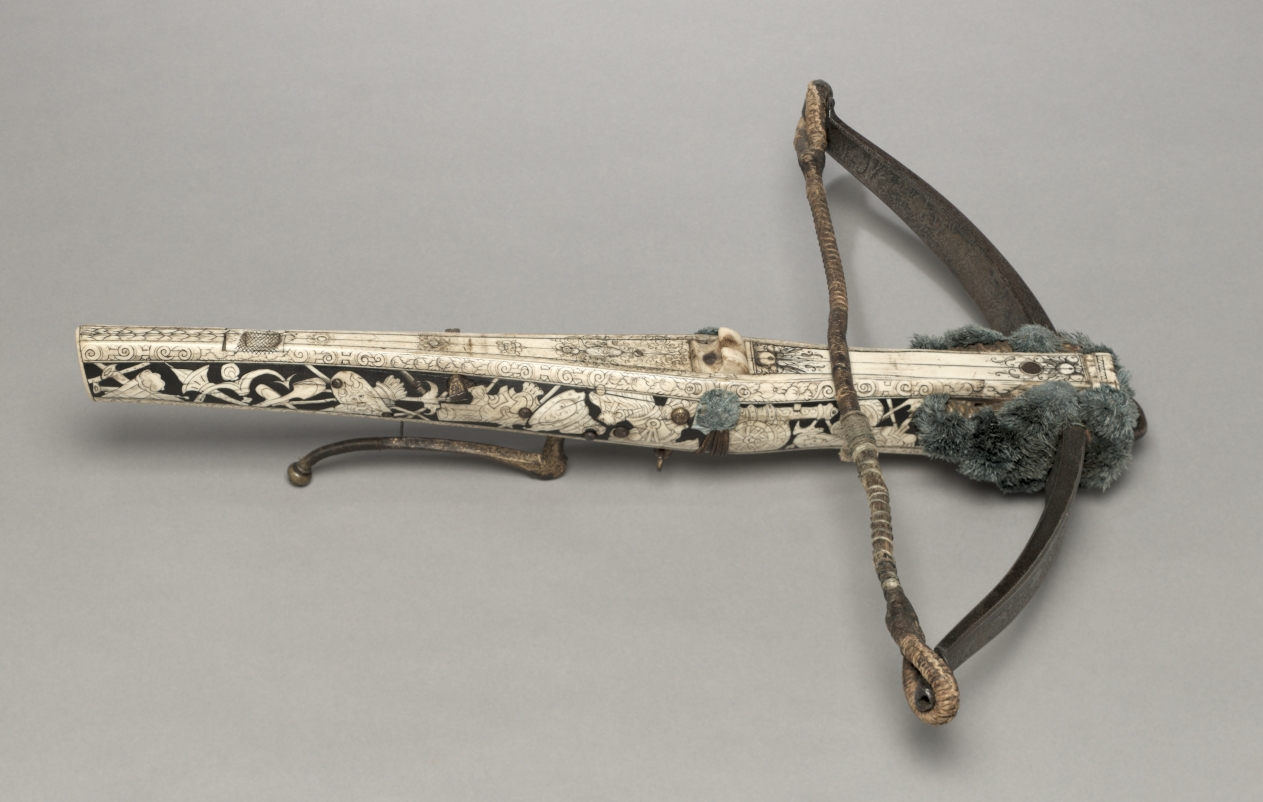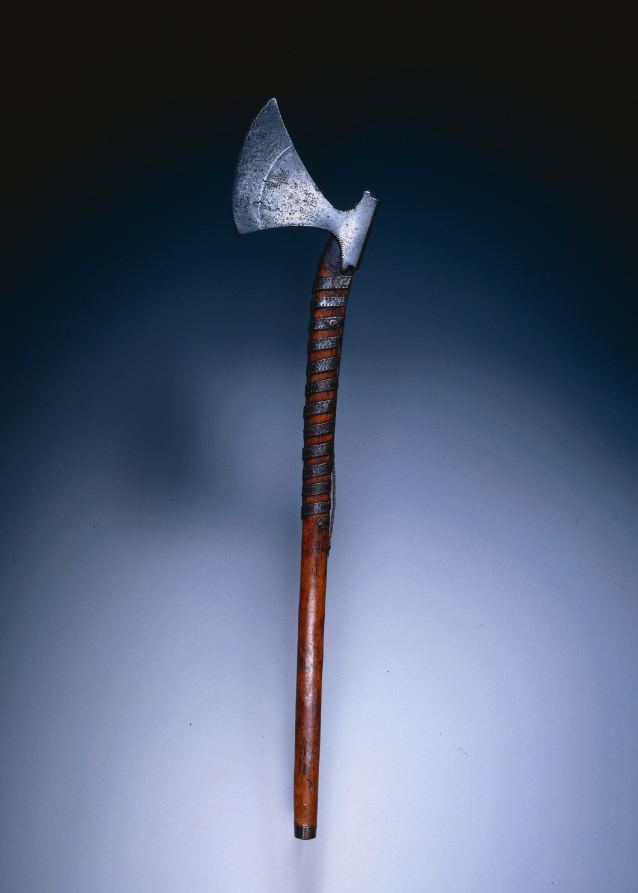Coming this Holiday season:
Tag: archery
Medieval Arms at the Cleveland Art Museum
The Cleveland Museum of Art has just made over 30,000 images from their collections available for reuse under a creative commons zero license. Here’s a few examples of Medieval arms in their Armor Court.

Crossbow of Elector Augustus I of Saxony, c. 1553-1573. Source: Cleveland Museum of Art, Creative Commons CC0 1.0


Left-Handed Dagger or “Main Gauche” c. 1650. Source: Cleveland Museum of Art, Creative Commons CC0 1.0
More Details of the Lamoka Diorama
 Here’s a photo showing part of the interior of the house in the Lamoka diorama at the New York State Museum. The lodge itself is based on Ritchie’s interpretation of the numerous post molds and features he described as floors at the site, as detailed in his book The Archaeology of New York State. The contents of the interior of the lodge are more speculative. Some items are based on actual artifacts found at the site, like the antlers seen hanging from one of the wooden supports. Others are undoubtedly inferred from more recent Native Americans, ethnographic hunter-gatherers, and other archaeological evidence. The textiles in particular are beautifully done.
Here’s a photo showing part of the interior of the house in the Lamoka diorama at the New York State Museum. The lodge itself is based on Ritchie’s interpretation of the numerous post molds and features he described as floors at the site, as detailed in his book The Archaeology of New York State. The contents of the interior of the lodge are more speculative. Some items are based on actual artifacts found at the site, like the antlers seen hanging from one of the wooden supports. Others are undoubtedly inferred from more recent Native Americans, ethnographic hunter-gatherers, and other archaeological evidence. The textiles in particular are beautifully done.
Especially interesting is the bow seen hanging on the left side of the photo. Most archaeologists would probably doubt that bows and arrows were used during the Late Archaic in New York. Instead, atlatls (spear throwers) are considered the primary projectile weapon of the time (although bannerstones/atlatl weights are rare to nonexistent at Lamoka). The issue is unresolved however, and several archaeologists have argued for the presence of bows and arrows by this time period (see, for example, Evidence for Bow and Arrow Use in the Small Point Late Archaic of Southwestern Ontario
by Kristen Snarey and Christopher Ellis).

